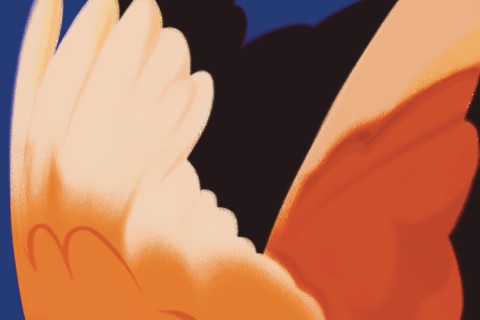There ain't no soul in plastic
We put up our tree last week, and it's beautiful. It's fake and petite and 90 percent of the ornaments are at the bottom, reflecting the height of my children (its chief decorators). It's a perfect Christmas tree shape, which is what you get from a plastic tree.
When I was little, my parents used to drag us out to cut down a tree off our property. We lived on 80-plus acres of former tobacco farm, composed of both field and forest, but there were very few pines around. Instead, we had cedars, which is to say that for the first 18 years of my life, our tree looked like a giant shrub in the corner of the living room.
Cedars smell exactly the way Christmas should smell, but decorated they look tawdry and cheap. Their branches are skinny and spindly, meaning ornaments make them droop, but their tops are broad and wild, like over-teased whorehouse hair. Every year I despaired of ever having a normal-looking Christmas tree. I wanted something more like a geometrical triangle, broad and strong at the bottom and narrow at the top, like a decorative German beer stein. I wanted "O Tannenbaum," not "Grandma Got Run Over By a Reindeer."
Now what we have is manicured and manufactured. It's petite and small, like our house. It holds ornaments well. But I miss those wild ladies we plucked from our farm land. I miss that pungent cedar smell. And I wonder what my children are missing without those frigid walks, the arguments over which tree to chop down, the inexpert wielding of an axe by their pale and scholarly parents.
I have some research to do about carbon footprints, but I hope the results favor real trees. In our family, the mystery of Christmas is about the incarnation of Christ into the world, but it would be nice to at least have a whiff of ancient Druid about the place. The irony is that the fake tree is the epitome of evergreen: barring house collapse or nuclear war, it will persist in its plastic greenness up to and beyond Christ's second coming. But then again, it's fake. If there's anything this life of faith has taught me, it's the value in the real and messy and alive over the shadow of perfection.
You can look up "Platonic idealism" on Wikipedia right this very moment and read the following: "A particular tree, with a branch or two missing, possibly alive, possibly dead, and with the initials of two lovers carved into its bark, is distinct from the abstract form of Tree-ness. A Tree is the ideal that each of us holds that allows us to identify the imperfect reflections of trees all around us."
I've always found Plato and his commentators annoying in their dislike of imperfection. My theories of the real run much more Velveteen Rabbit than shadow and cave, which is to say that imperfections are a sign of experience. Experience, or life lived—like the marred and pocked bark on trees in the forest—is so much more meaningful than flawlessness. I'm beginning to see artificial trees as the "imperfect reflections."
Don't get me wrong. I will still enjoy our tree this year. I will sit in the darkened living room with a mug of tea and and bask in its multicolored glow. But I won't for a minute go on thinking I've somehow improved upon the wild and crazy trees of my childhood. If anything, I'm rebranding those trees from my memory. In their embarrassing frankness and their collective refusal to look like traditional Christmas trees, they're the most real trees I've ever known.
Originally posted at Milkweed





